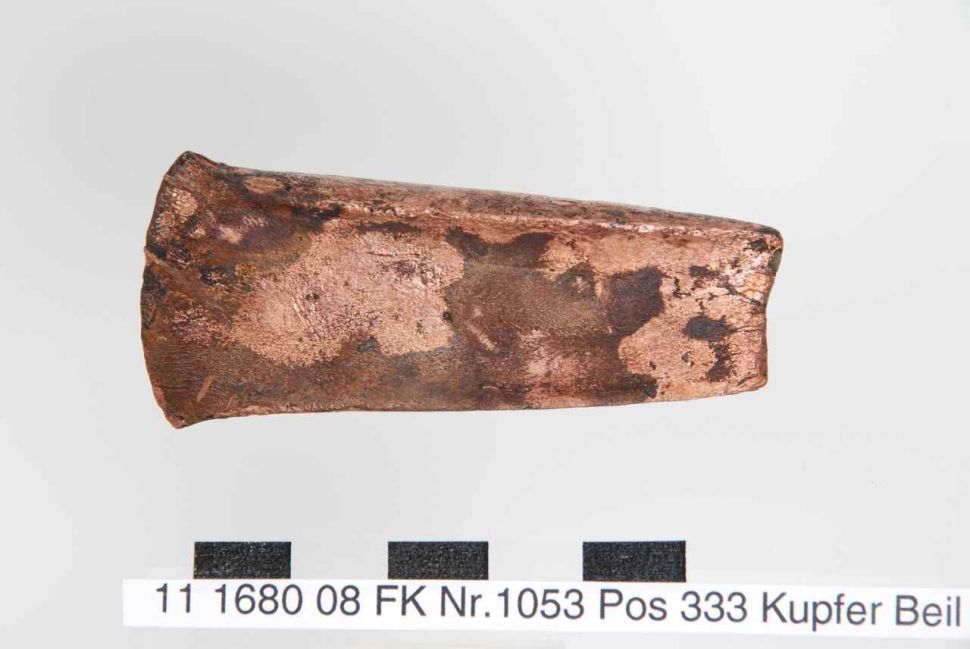5,000-Year-Old Copper Ax Found in Switzerland

5,000-Year-Old Copper Ax Found in Switzerland
In Switzerland archaeologists found a copper blade which was just like the axis of Ötzi, the famous “Iceman” was carrying when he died.” Like Ötzi’s ax, this tool was made with copper that came from hundreds of miles away, in present-day Tuscany in central Italy . The findings could shed light on the links between the Copper Age and Europe.

Bad fortune eventually made Otzi famous as the Iceman. Around 5,300 years ago, he was shot with an arrow, struck in the head and died at a mountain pass high in the Alps. He was buried in a glacier until 1991, when hikers found his body near the Italian-Austrian border.
Ötzi is Europe’s oldest mummy, and scientists have researched almost every possible aspect of his life and death from his tattoos and tools to diet and DNA. Among the equipment Ötzi carried was an ax of almost pure copper, which was remarkable because of its wooden handle and leather straps were still preserved.
This past summer, researchers traced the source of the metal in Ötzi’s ax to southern Tuscany, which came as a surprise to them. The huge mountains of the Alps were thought to be a “neat cultural barrier” separating the metal trade, the authors of that study wrote in the journal PLOS One; people living around the Alps at that time were believed to have gotten their copperlocally or from the Balkans.
Now, archaeologists in Switzerland report that they’ve found another blade with the same make as Ötzi’s at the northern foot of the Alps.

“It was a very efficient general-purpose ax, especially proper for woodworking,” said Gishan Schaeren, an archaeologist with the Office for Monuments and Archaeology in the Swiss canton (or state) of Zug. But in addition to chopping trees to build stilted houses, people could use these axs as lethal weapons, Schaeren added.
The newfound blade was between 5,300 and 5,100 years old and missing its wooden handle. It was about half the weight of Ötzi’s blade and shorter, but the same shape. By measuring the traces of lead in the blade, Schaeren and his colleagues could link the copper to the same source in southern Tuscany.
“Mainstream research normally does not consider the possibility of intense contacts between south and north in the Alps” during this time, Schaeren told Live Science in an email.

Stronger links to southern Europe, Schaeren added, could explain certain styles of rock art, pottery, burial customs and other phenomena seen in the north.
“It is one step to a much more connected worldview,” Schaeren said.
The findings were published last month in the German journal Archäologische Informationen.